Southwest Michigan field crops update – August 21, 2025
Seed fill continued in corn and soybeans. Watch for late-season foliar diseases and insect defoliators.

Weather
Much-needed precipitation fell early this week, ranging from a little over half an inch to two inches or more. Daytime temperatures continued to be relatively high, but nighttime temperatures were lower than they have been most of the summer. This upcoming week will bring a cooldown in daytime and nighttime temperatures, although little precipitation is expected for southwest Michigan.
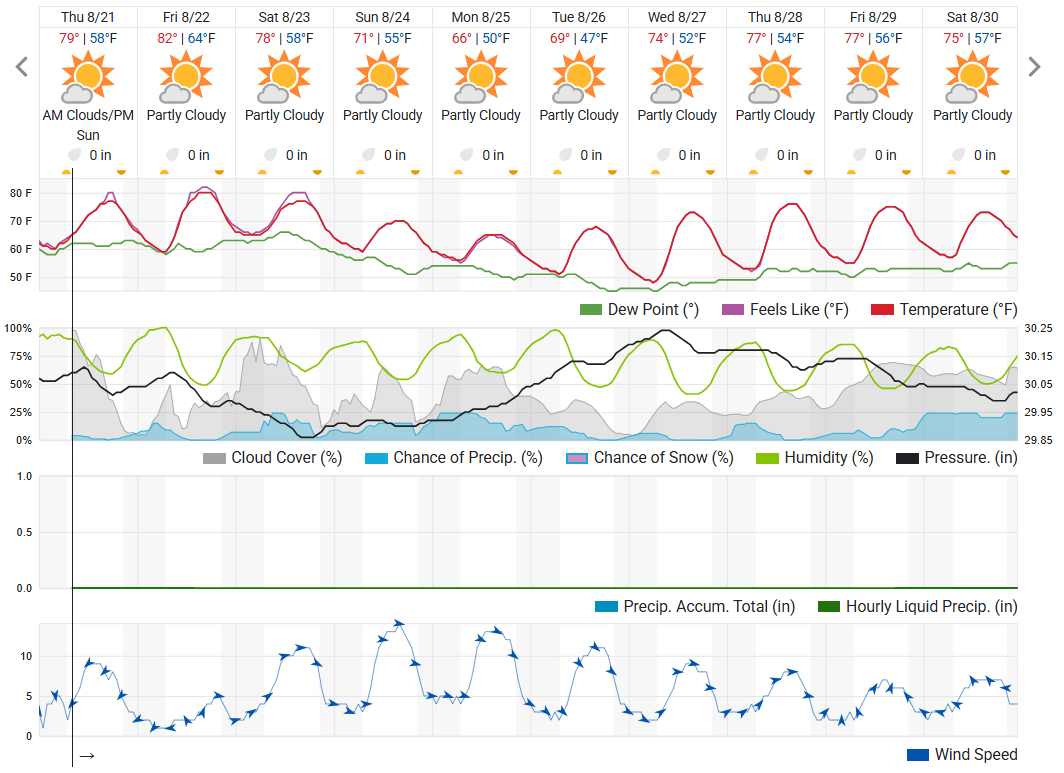

Crops and pests
Soybean pod fill continued. Most soybeans have seeds of 1/8 inch or larger (R5), and some are close to full pod fill (R6). Watch for sudden death syndrome, brown stem rot and red crown rot, all of which have similar symptoms. Red crown rot is a disease new to the Midwest, and it has not been confirmed in Michigan yet. Several insects contribute to soybean defoliation at this time of year, including grasshoppers, Japanese beetles, bean leaf beetle and more. During R3 to R5, the action threshold is 10% insect defoliation. The article “Soybean Defoliation: It Takes a lot to Really Matter!” from the Ohio State University Extension has helpful images to evaluate defoliation and even a quiz to test and train yourself.
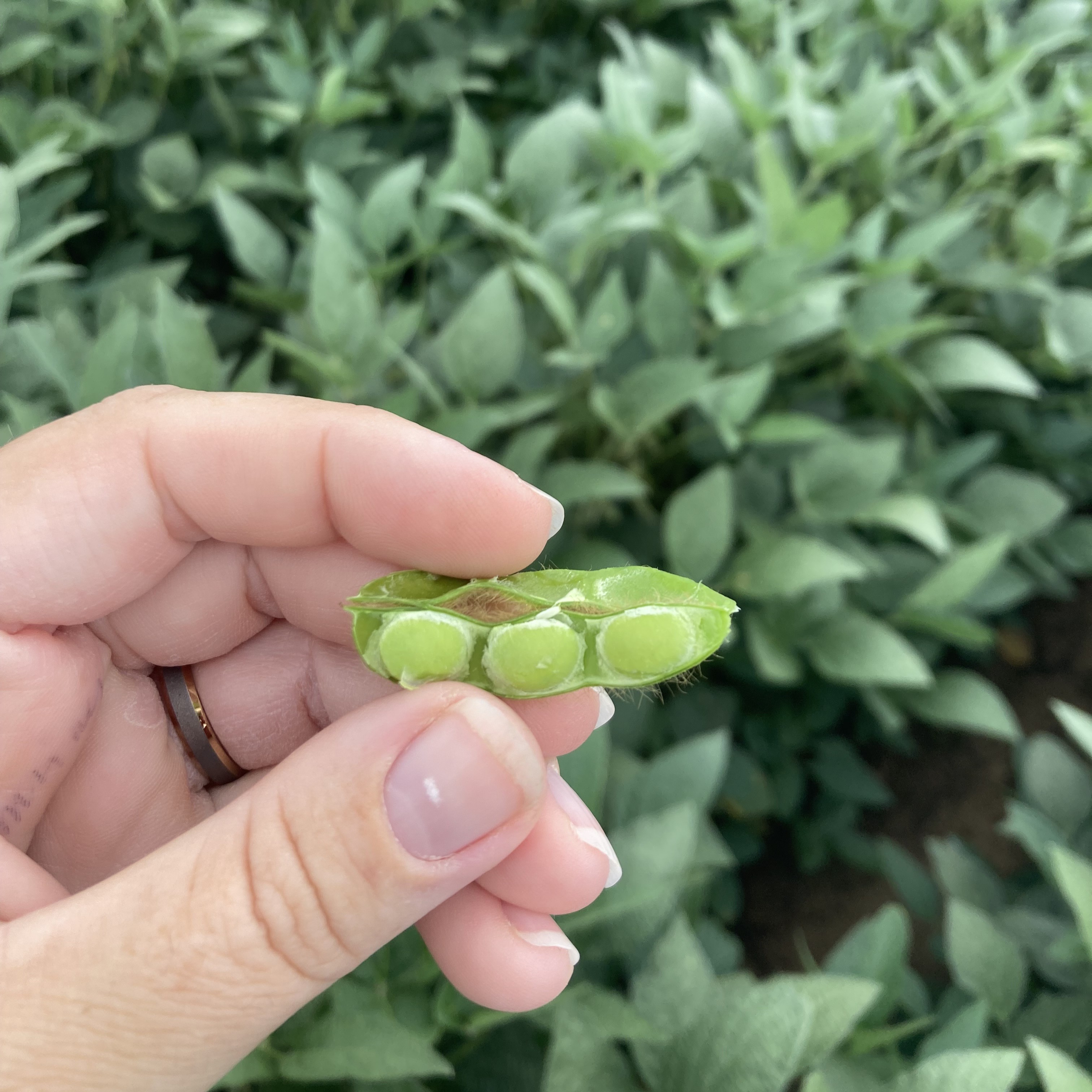
To evaluate soybean defoliation, first find a representative plant. Then remove the two trifoliates with the most defoliation and the two trifoliates with the least defoliation. Remove the best and worst leaflets from each of those trifoliates. This should leave you with one representative leaflet from each trifoliate and four leaflets in total. Finally, rate the defoliation of the remaining leaflets to come up with overall defoliation. In most cases, soybean defoliation is below threshold and does not require action. However, check regularly to make sure that significant feeding is not occurring on the pods.
Grain fill continued in corn. More acres entered R5 (dent), at which point indentations are visible on the outer tips of kernels. During this time, liquidy white parts of kernels are converting to starchier, more yellow parts. The visible delineation between these two parts of the kernel is referred to as the milk line. Male row destruction continued in seed corn, and defoliation sprays on some early planted acres are probably not far out.
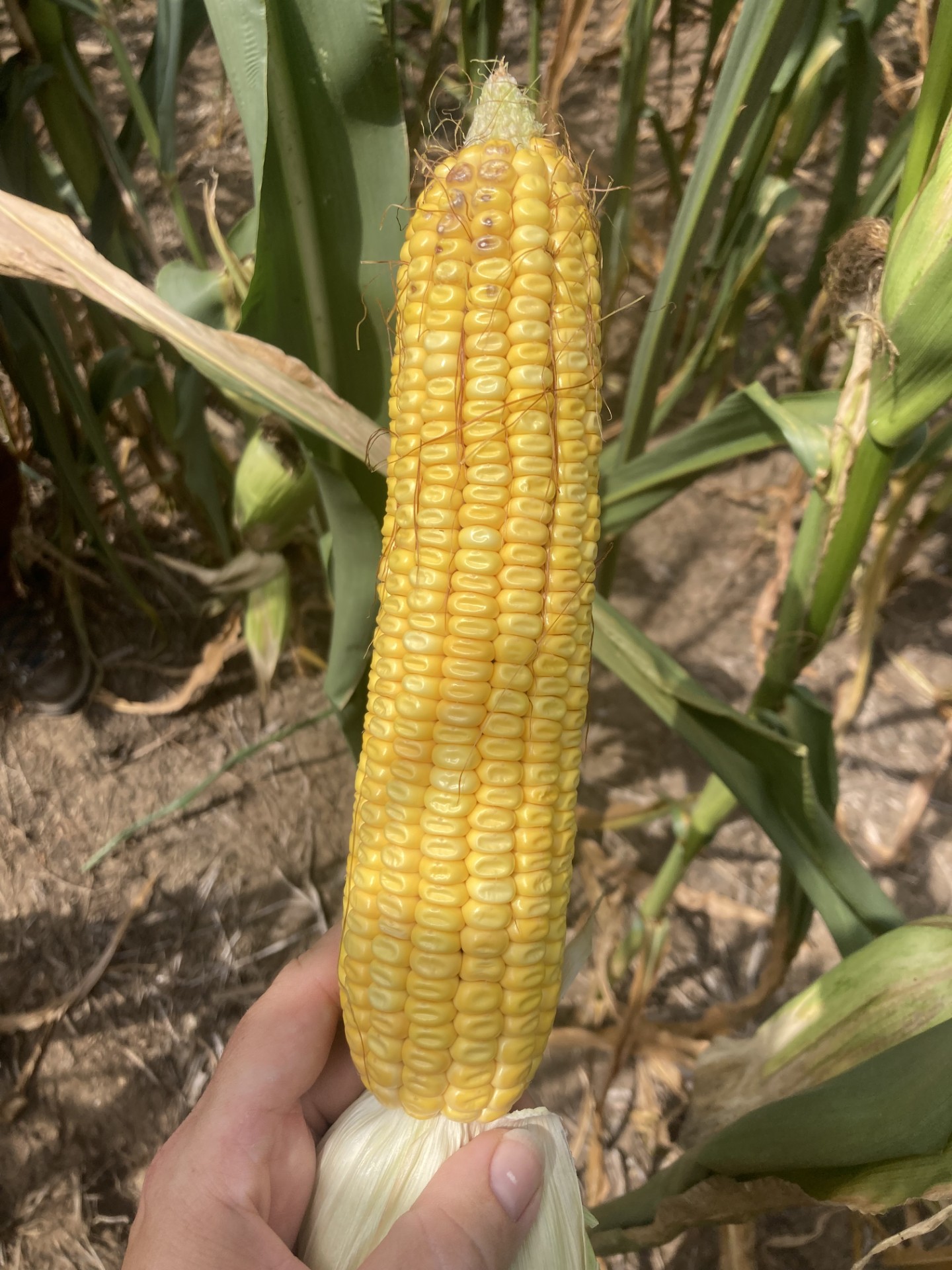
Tar spot is present in most of the counties in southwest Michigan. The Crop Protection Network tar spot of corn map contains a helpful table for determining if a tar spot fungicide application is beneficial at various crop stages. As more fields enter R4 and R5, the benefit of applying a tar spot fungicide decreases. Southern rust was confirmed in St. Joseph County this past week. For more information on southern rust and how to manage it, check out the article “Southern rust an occasional threat to Michigan corn” by Michigan State University Extension field crops pathologist Martin Chilvers.
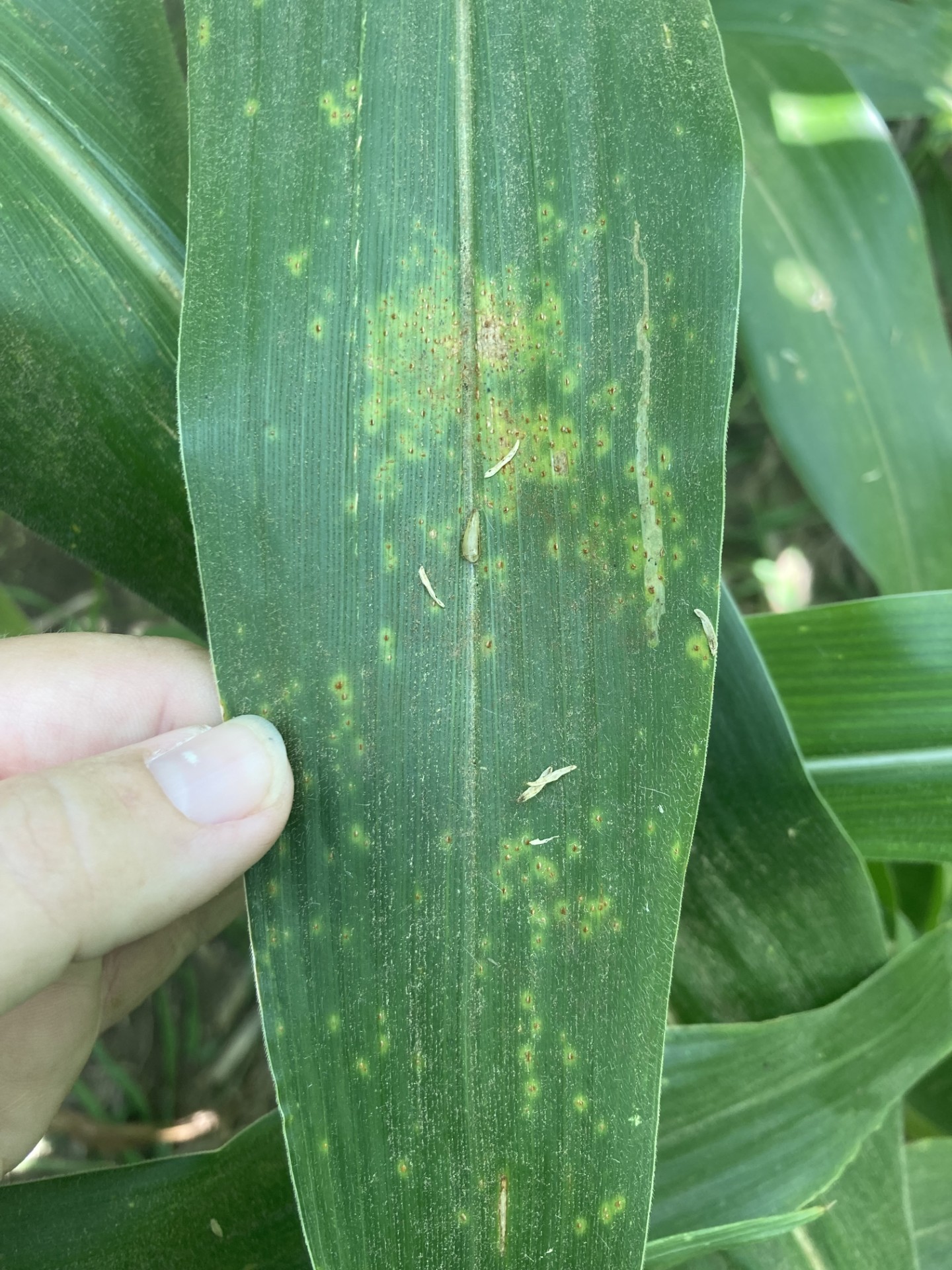
Winter wheat harvest wrapped up, and many fields have been planted with cover crops or double-crop soybeans by now. Variety selection and small batch seed treatment for the upcoming crop will start soon if it hasn’t already.
Fresh crop potato harvest continued, as did vine kill applications. A majority of acres will have been vine-killed by the end of next week, and storage harvest will begin soon. Yields and quality are generally down this year due to the high sustained temperatures throughout the summer.
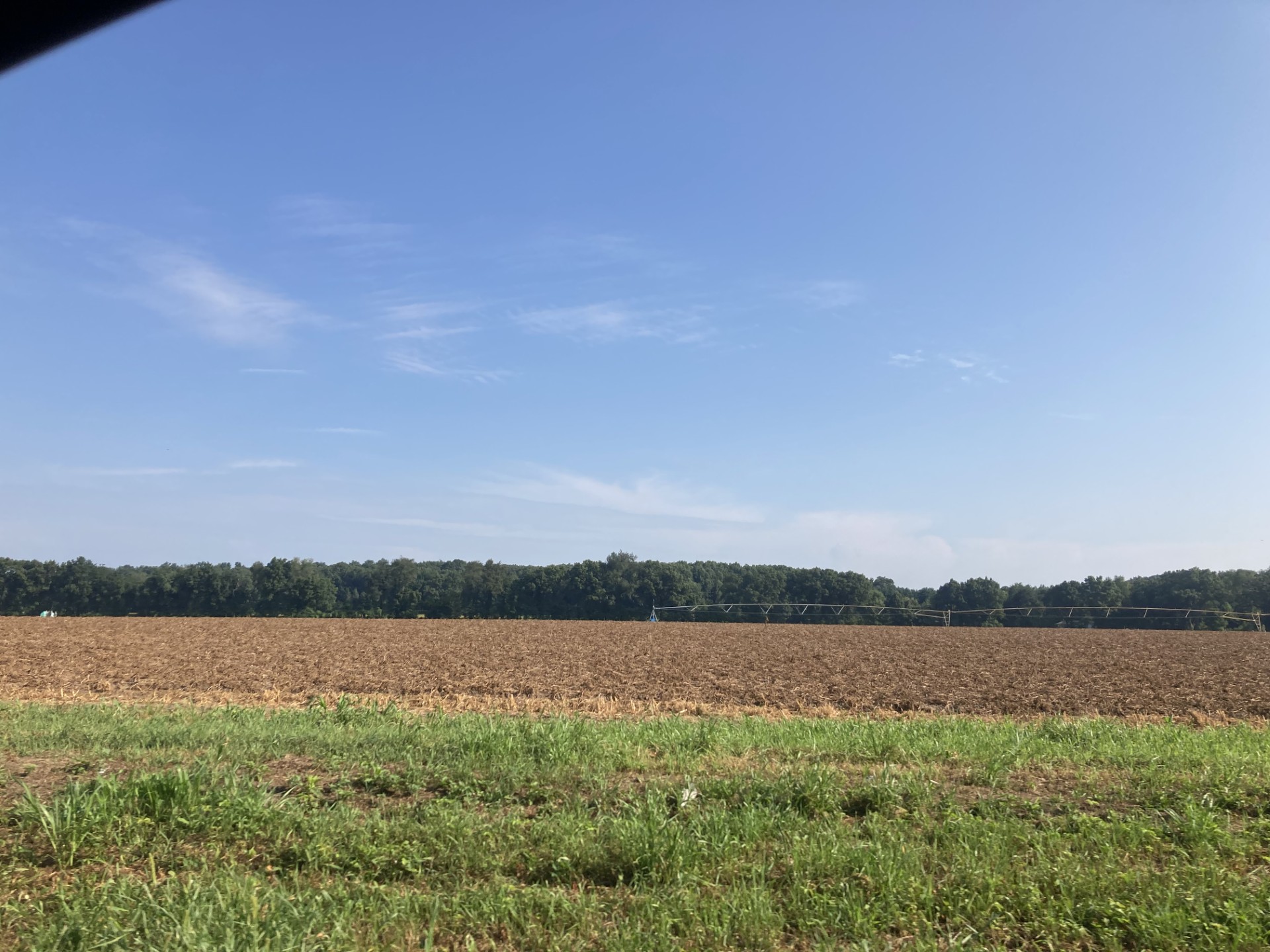
Alfalfa and forages continued at variable stages of growth. As fall approaches, some growers are fitting in a last cutting, and fertilizer applications will go out soon. Potassium especially is important to help alfalfa and perennial forages overwinter well.
Weekly water use
Crop water use generally decreased this week compared to last week. In some areas, rainfall was sufficient to meet the average crop water demand of about 1.15 inches per week, though not all regions received enough precipitation.
Corn at the dent stage has begun to reduce water use, currently averaging about 0.16 inches per day. Soybeans are in their most sensitive period for water stress, with peak water use occurring between the R3 and R6 stages (from pod development through seed fill).
Irrigation should be scheduled to meet at least five to six days of crop water demand. To reduce the risk of diseases associated with prolonged leaf wetness, apply larger amounts of water less frequently rather than making frequent small applications.
Irrigation Scheduling Tools can help estimate crop water needs and decide timing and application.
Table 1. Estimated weekly crop water use for field crops in Michigan (inches/week) for the week of Aug. 18-24.
|
Crop |
Growth stage |
Constantine |
Entrican |
Hart |
|
Corn |
Reference ET |
1.03 |
1.06 |
0.96 |
|
Corn |
V14 |
1.13 |
1.17 |
1.06 |
|
Corn |
VT, Silk, Blister, Dough, Begin Dent |
1.13 |
1.17 |
1.06 |
|
Corn |
Full Dent |
1.03 |
1.06 |
0.96 |
|
Soybeans |
R2 Full Bloom |
1.13 |
1.17 |
1.06 |
|
Soybeans |
R3 Begin Pod / R4 Full pod |
1.13 |
1.17 |
1.06 |
|
Soybeans |
R5 Begin seed / R6 Full seed |
1.13 |
1.17 |
1.06 |
The table above presents estimated crop water use for various field crops across three locations in Michigan. This data helps irrigation management decisions by showcasing potential crop evapotranspiration, calculated based on reference evapotranspiration and crop coefficients for each crop growth stage. It is crucial to note that crop water use values vary across regions due to differences in weather conditions, growth stages, agronomic practices and soil properties.
When using these values for irrigation scheduling, be mindful that they assume all applied irrigation water will be utilized by the plants without any loss. Additionally, these values do not account for any precipitation that may occur during the week of calculation.
Reference evapotranspiration data was obtained from Michigan State University Enviroweather, which also offers a model for determining potential crop evapotranspiration. To access this tool, visit Enviroweather, click on "Crops," select your crop and use the potential evapotranspiration tool by choosing your nearest weather station, the latest date of interest and other crop information.
Field Crops Virtual Breakfast Series
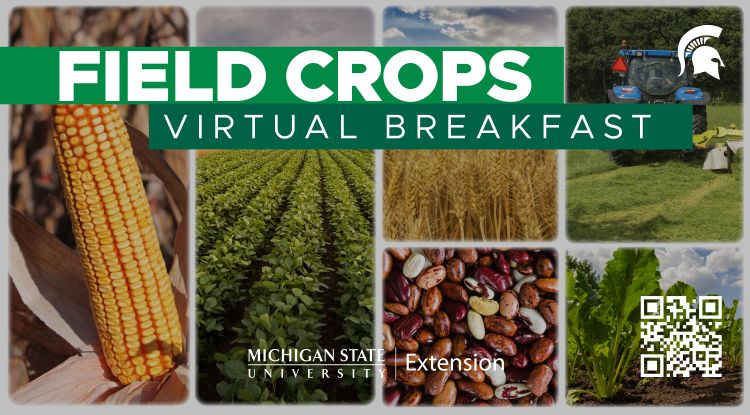.jpg?language_id=1)
Potassium! Why it matters to alfalfa persistence, presented by Kim Cassida, MSU Extension forage specialist, was the topic for the MSU Extension Field Crops Virtual Breakfast this week. Potassium is a major nutrient required for forages, and potassium deficiency is one of the biggest causes of alfalfa decline.
Recordings of this and all the Virtual Breakfast meetings are closed-captioned and available at the Field Crops Virtual Breakfast webpage and the MSU Extension Field Crops Team social media platforms: Facebook, Spotify, YouTube, Apple Podcasts and Twitter/X.
This work is supported by the Crop Protection and Pest Management Program [grant no 2024-70006-43569] from the USDA National Institute of Food and Agriculture. Any opinions, findings, conclusions, or recommendations expressed in this publication are those of the author(s) and do not necessarily reflect the view of the U.S. Department of Agriculture.



 Print
Print Email
Email




